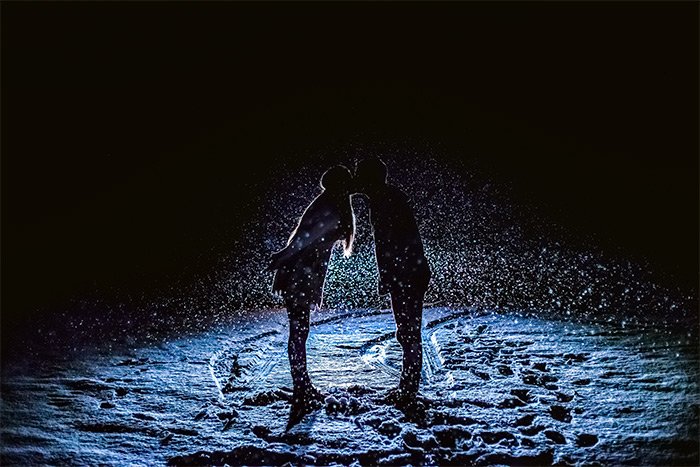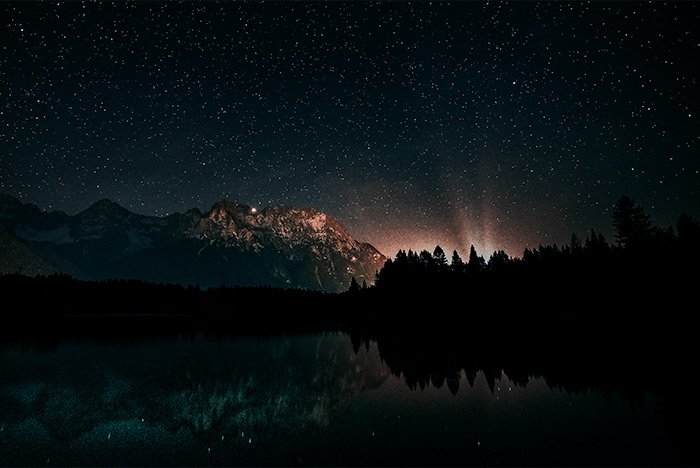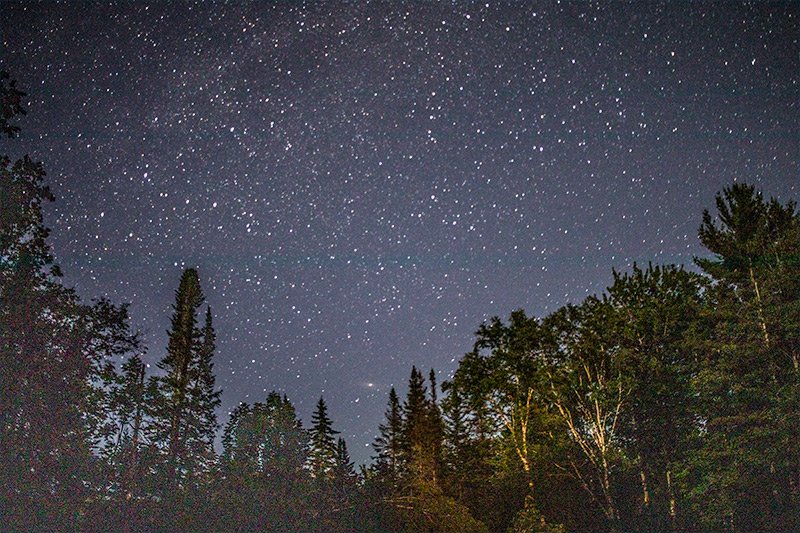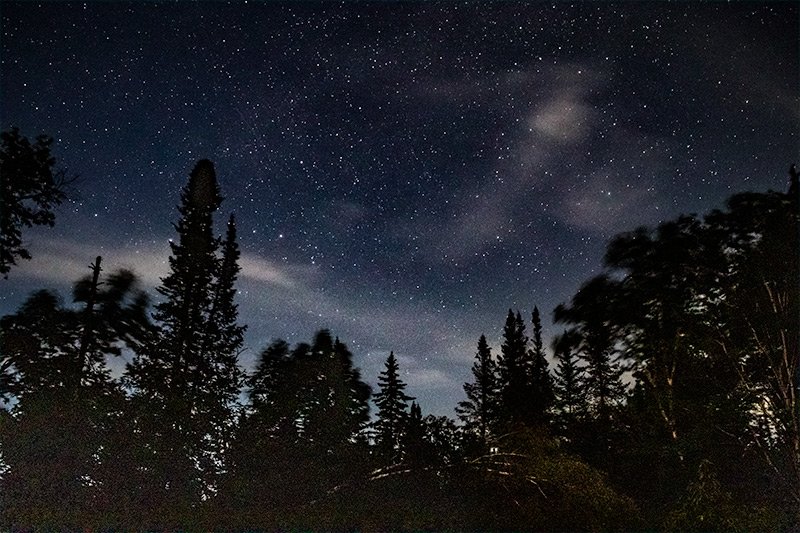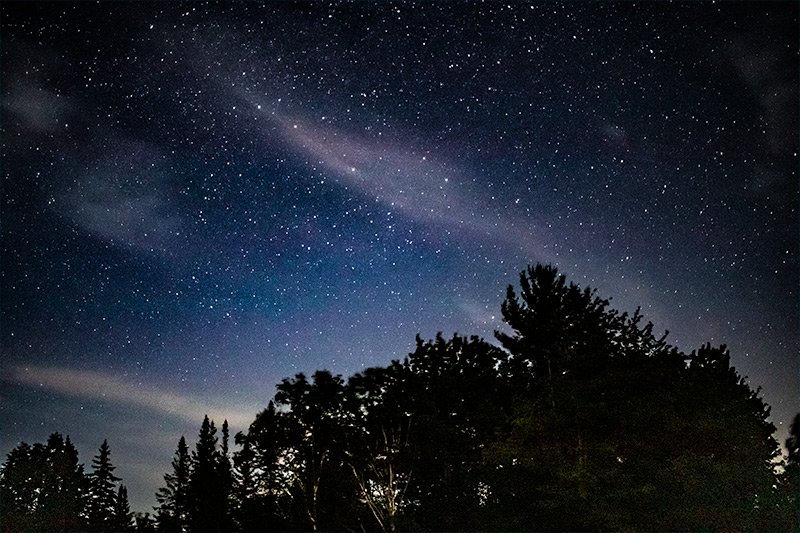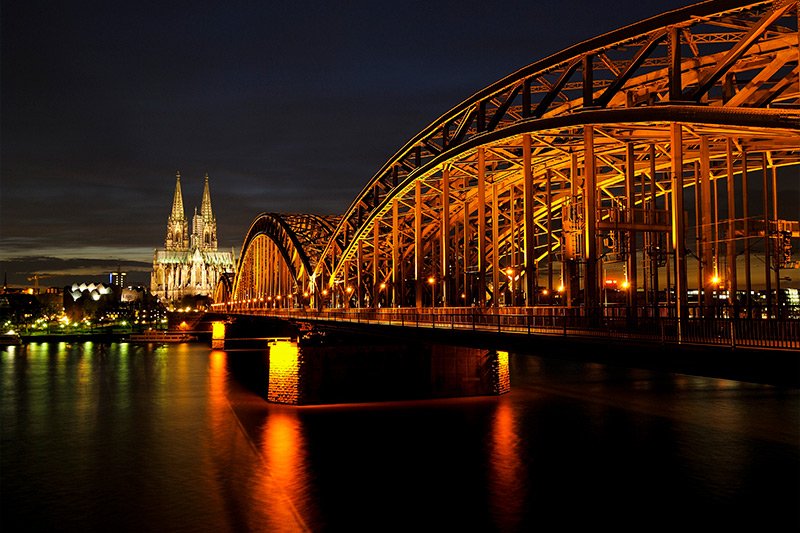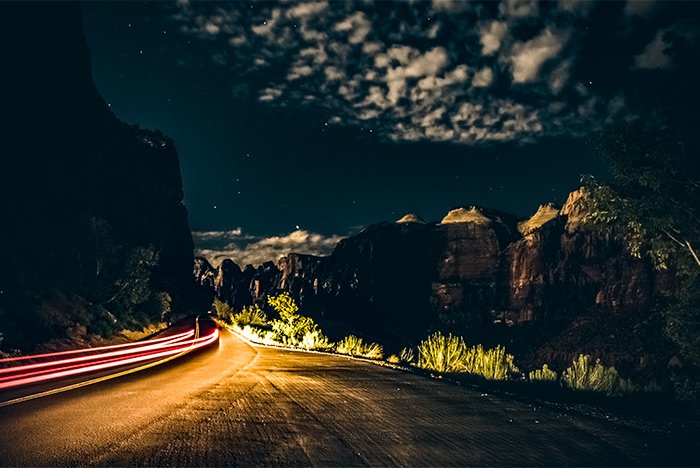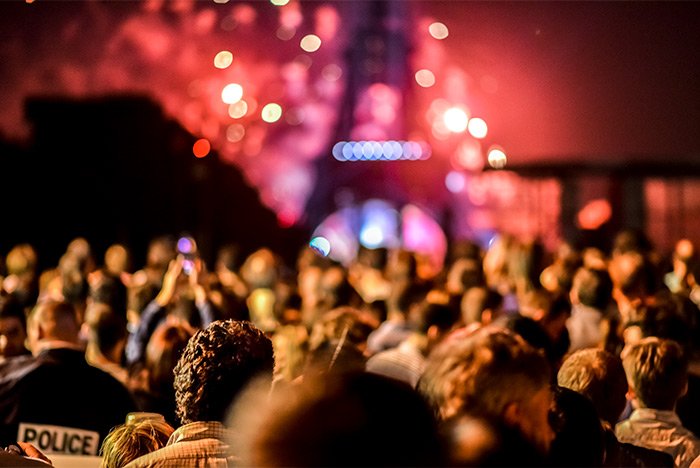How to Photograph Car Tail Light Trails at Night
After shooting portrait, landscape and wildlife photography, I would say that one of the most popular types of photography budding amateurs are interested in is night photography. Whether it be taking pictures of the moon, stars or cityscapes, night photography is downright cool. It’s interesting and it virtually doubles the number of things you can photograph. For example, taking a photo of a building during the day is one thing, but taking a photo of that same building at night is quite another. Night photography is right up there with long exposure and HDR photography in my book. I absolutely love it.
One type of night photography I see a lot of out there has to do with tail light trails of moving automobiles. I’m sure you’ve seen this. Let me give you an example.
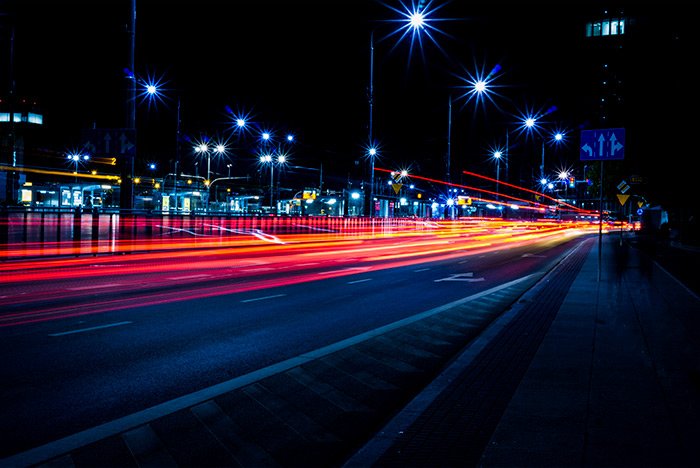
You may not know it by quickly glancing at this photo, but there’s actually quite a bit going on. Look at those trails. That’s shutter speed talking right there. Look at those street light bursts. That’s aperture. Look at the very deep depth of field. That’s aperture as well. Notice the absence of grain. That’s ISO. To capture quality night photographs like this, you’ll need to become comfortable with full
Manual mode and you’ll need to work with a few different tips that I’ll share with you down below.
This is going to be an exciting post because, if you’re new to photography, it’ll test you as well as your camera. I think you’re going to learn a lot. Consider this an all-in-one primer in photography itself.
What Type of Equipment Will You Need?
To take high quality photos in the dark, you’ll surely need a camera that offers different modes, such as aperture priority mode, shutter priority mode and manual mode. You’ll also need to be able to manually set your ISO values. Most modern DSLR cameras can do all of these things. You’ll also need a lens that’s wide enough to capture what you would like to capture. While you can certainly take advantage of lenses with longer focal lengths for specific types of shots, I recommend using a lens that’s between the 10mm and 20mm range. That’s just my personal preference because I love wide angle lenses. Again, depending of what you’re going for, feel free to use the lens of your choosing. I can think of a million different reasons to use all types of lenses.
While it’s obvious that you’ll need a camera and lens, it’s even more obvious that you’ll need a tripod. Since your night shots will require relatively long exposure times, it’s important to keep the camera as steady as possible. Hand holding the camera simply isn’t going to cut it. I suppose you could take advantage of a short wall or a steady object to rest your camera on while taking these types of pictures, but a tripod is definitely the most popular way to go.
Some other equipment that’s helpful, but not absolutely necessary would be a remote shutter and a lens hood. Regarding the remote shutter, the more you keep your hands off the camera the better and regarding the lens hood, lights in the city at night can be unpredictable. It’s better to be safe than sorry and having a piece of gear that can reduce lens flares would certainly be a plus.
The Truth of the Matter
I’m going to tell you the truth right now. If you were to go stand next to a busy street at night, situate your camera on a tripod, set your camera to shutter priority with a shutter speed of three seconds and snap a photo with your camera pointed towards the cars driving by, you’d take a pretty cool photo. If this was the first photo of this kind you ever took, you’d be thrilled with yourself. You’d have trails and glows and you’d be showing off to everyone nearby. The fact of the matter is that you
should be thrilled because you went out there and did it. You photographed some moving vehicles and got the trails you were after. That’s awesome.
As you reviewed the multiple photos I’m sure you would take, you’d begin to ask yourself questions. “What if the trails weren’t so long?” “What if the trails were even longer?” “How do I get a darker or a lighter scene?” “How do I add sharpness or blur to the foreground and background of the shots?” “What if I wanted sharpness
and long trails?” “How do I get rid of all this grain in my shots?” So while your initial images would appear to be stellar, you may evolve into someone who has specific requirements in the future and that’s what I’d like to discuss in this post.
Where Are You Going to Photograph From?
The first thing you want to do is
find your spot. All places aren’t created equally and you’ll need to locate the perfect area for you to settle into and snap away. Bridges are great because they not only funnel vehicles into straight narrow routes, they also frame the scene nicely. As in any other type of photography, framing is important here. Also, which perspective you take your photos from is important as well. What would be super cool is if you placed your camera down on the ground and shot from there. Or from on top of a ladder or from the top of a bridge, photographing the cars driving underneath it. Think of neat angles, just as you would in regular daylight photography.
Another important consideration is how inherently bright your scene is. Is it dusk? Did the vehicles just begin turning their lights on? Is it a daylight shot where you’re photographing tail lights heading towards a stop light? Or is it very dark outside and you’d like to capture not only tail lights and headlights, but the lights of a city as well? There are so many options, such as shooting during the blue hour, the golden hour or straight up at night.
Experiment with Your Settings
Okay, let’s get into the meat of things. In this section, I’d like to talk about some of the settings you might use while photographing car trails at night. I’d like you to sit down with your camera as you read this and turn it on. Then, flip it to full
Manual mode. What Manual mode does is it gives you full control over both your aperture and shutter speed. Believe it or not, using Manual mode isn’t as intimidating as you’d think. If you switch your viewing mode from your viewfinder to live view on the rear screen, you’ll see the effects of any changes you make to your settings right on that back screen.
Here’s what I’d like you to do. Set your
ISO value to
100. That’s where you’ll keep things, so once set, you can forget about it. While there’s a lot that goes into the ISO discussion, we’ll just leave this here for now. Once that’s set, start by changing your shutter speed from something slower to something faster and then back again. Notice how your changes affect the scene on the rear screen of your camera. Next, change your aperture size from something small to something large and then back again. Do you see how your scene gets brighter and then darker? The difference between Manual mode and the other modes, such as
Shutter Priority and
Aperture priority is that there’s no compensation that’s offered by the camera. Your settings are pretty much locked in so you can capture exactly the scene you would like to capture.
If you were to set your camera to either Shutter Priority or Aperture priority and make the same changes as I just suggested you make above, you’d see your camera compensate by setting other areas of your camera all by itself. The nature of your camera is that it wants you to capture a correctly exposed image. It has no idea that you actually want a long exposure that includes tail light and headlight trails. You’ll have to force the issue with Manual mode.
Now let’s pretend that you’ve set your camera up on a tripod out on the street. You’ve got your camera pointed at your scene and everything is perfect. Let’s talk about some of the settings you might choose.
White Balance: If you shoot in RAW mode, you really don’t need to concern yourself with white balance too much. You can always adjust that pretty easily with any of the white balance correction tools available to you in Adobe Camera Raw or comparable applications. I suggest you leave your camera set to
Auto White Balance.
Shoot in Live View: Viewing your scene through the large screen on the back of your camera is going to give you the best idea of what’s going on with things. Live View also doesn’t force the camera to use its mirror, so there’s not going to be any blur caused by what’s referred to as “mirror slap.” Although, since you’ll be taking such long exposure photographs, I don’t think such a tiny vibration is going to give you much trouble.
Depth of Field: Since you’ll likely want to focus on not only the cars and trucks passing by, but buildings and nature that are in the scene as well, you’ll need to set your aperture to something like f/11. This aperture setting will give you a nice deep depth of field. Just be sure not to go too much smaller than f/11 because the smaller you go, the more you’re prone to softening your images. This softening, or slight blur, is referred to as “lens diffraction.” Essentially, lens diffraction occurs as your aperture size shrinks because the light waves in your scene spread out to the degree that they interfere with one another. The result is blur and no one wants that.
Another benefit of having a small-ish aperture is the twinkles of the lights in your scene. If you look at the demo photo I’m using in this post, you’ll see the bursts in the street lights. That’s a very cool plus.
And finally, because you’ll be using longer exposure times for these images, a small aperture size is almost mandatory. If you didn’t, your images would end up being too bright, especially in cities with lots of lights.
Where to Focus: Because your aperture setting isn’t going to be something extremely high, such as f/22 or f/32, there will be some blur from the inherent depth of field in your shot. Because of this, you’ll need to focus on something. Because depth of field falls 2/3 behind your focal point and 1/3 in front of it, be sure to focus on the specific area that’s 1/3 of the distance away from your camera in the scene.
Shutter Speed: This is where you’ll need to start working your controls. When taking photos like this, start off by setting your shutter speed to something like five seconds. If that works out and if the light trails are as you want them to be, calibrate the rest of your camera to go along with that. If your images happen to look perfect, that’s great. If they are too dark, perhaps raise your ISO value by one stop to 200. Or perhaps open your aperture by one stop to f/9 or something like that. Basically, if the images are too dark, you’ll need to either let more light in or increase the sensitivity of your sensor. If your images are too bright, try reducing your shutter speed to four seconds or increasing your aperture value by one stop to f/13. It’s a balance and I wish I had the magic combination for you. Really, all you can do is experiment with some decently long shutter speeds and then alter the remaining settings on your camera to obtain the correct exposure.
Shutter Delay: To reduce camera shake (and the resulting blur) as much as possible, you’ll want to use either a remote shutter button or set the shutter delay feature on your camera to two seconds or something similar. Essentially, you’ll want your hands off the camera as the shutter moves inside of it.
Use Long Exposure Noise Reduction: Since you’ll be using longer shutter speeds, you may want to turn on the Long Exposure Noise Reduction feature on your camera, if it’s available. This feature reduces the amount of noise that arises in images due to the heat generated by the sensor during these types of shots.
Capture Multiple Photos: If you were to mix up your shots so you have very clear backgrounds because you specifically focused on them and sharp foregrounds because, again, you focused on them specifically, you could always keep your camera pointed at exactly the same spot, change your focal point and take multiple shots. Masking in Adobe Photoshop is an extremely helpful process during times like this. Consider aligning your photos in Photoshop and then masking out the parts you don’t want in each one. You’ll basically be building the perfect photograph this way. And don’t worry about cheating; this is what everyone does. No one is a purist anymore.
There you have it. The bottom line is to set your shutter speed and then experiment. Capturing light trails is really just long exposure photography. Every other setting you change is to compensate for that exposure. If you have any questions regarding this post or this type of photography, please ask in the comment section below or in the
photography question and answer forum. Thanks for reading!


